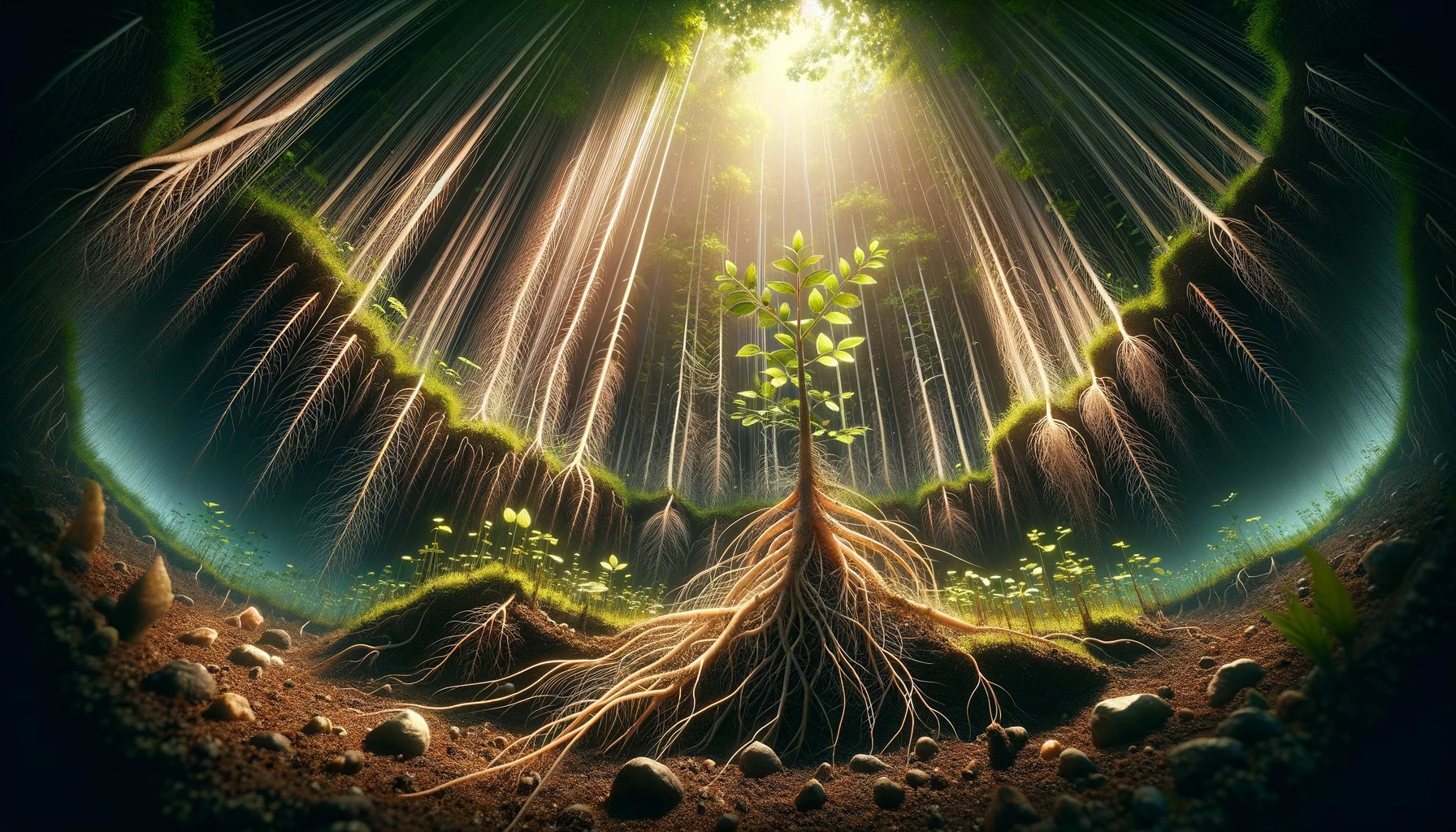We have spoken of roots a fair amount in the earlier soils/watering sections. Here I want to touch on growth and some of their processes.
Roots are, by far, the most important, and yet the least understood, of all plant organs. We can’t see them, and it takes a lot of work to learn anything, so they remain the great mystery. Roots do more to control overall tree health than the other parts; without a happy root system constantly drawing water and nutrients from the soil, the upper visible parts, trunk, branches, leaves do not flourish. Their wellbeing is all tied to what the root system can do. The tree “thinks” roots first. This begins at seed germination. Once given the go, a little engine starts to rev up inside the seed. Starch, stored for long periods, is now converted to sugars, readily-available energy for growth. The seed cap ruptures from internal expansion, the seed cracks open, and who sticks their head out first to have a look around? You got it, the first little root, the radical. Before anything else can happen, we need water, nutrients, and anchorage, all readily available in the surrounding soil. Roots first. Once the radical gets settled, then the tiny little stem, with its baby leaves on the end, can unfurl and start its journey upwards to the light.
Root growth is a bit different from the primary and secondary growth we have discussed in the context of the above-ground organ, the stem. Roots have a much denser and more difficult medium to grow into: soil, full of sharp edged rocks and immobile rocks that have to be grown around. They have learned how to overcome these obstacles.
Let’s talk about primary root growth. Similar to the SAM, the RAM root apical meristem has its own way of growing. Let’s start with what is called the root cap. Because of the harsh soil medium, growing root tips evolved some protection: the root cap. This glove-like covering for the root tip produces and is covered with a natural soil lubricant called mucilage. This greatly eases the root tip’s journey. Under the cap is the heart of the RAM, an area that behaves very much like SAM; it is a meristematic cell generating tissue.
Different from the above-ground meristems, the roots only grow more roots—that’s it. As the growing root cap pushes ahead, behind it are the youngest new cell zones. The first zone is called the zone of division. Back a bit farther is the zone of elongation, where cells and the new section of root are achieving their for now finished size. Farther back still and older is the zone of maturation and it is only in this zone, where the new root is stable and immobile, that we see tiny side roots, root hairs popping out through the outer covering of the root, the epidermis. This is really genius. If the tiny—honestly smaller than a baby’s hair—new root hairs were to emerge while the growing root is still moving in the soil, they would be sheared off by sharp soil particles as they were pushed by them. During all of the growing season this process continues. Indeed, sometimes root hairs only live for a week. Their constant new growth is essential for the ongoing life of the tree. Even before buds break, the water required must be available, supplied by who else but the first flush of non woody root hairs. These root hairs in their millions do all the water and nutrient absorption for the whole tree. A small root, even the size of a pin, is at least a year old, and its main function is as conduit for the water/mineral stream absorbed by the root hairs. That stream is on its way into the root xylem tissues with its vessels, and on its way up to the thirsty leaves.
This has dealt with primary growth and some function; we should discuss secondary root growth also.
Roots also experience secondary growth, an increase in diameter, and get rougher and develop cork on their outside surface. This is quite different from the secondary growth in the trunk. The secondary growth of roots is a reduced affair compared to the trunk just above. Once the first year’s primary growth is finished, a number of inner tissues go through some interesting changes as they mature into their finished pattern. In both primary stems and roots, the vascular tissues (xylem, phloem), used for liquid transport, are initially formed in bundles of both tissues together. These circular bundles are located toward the outer edge of the new stem/root. They reside in the cortex in stems and the ground tissue of the root. They are found just inside the epidermis. As the transition to the mature pattern begins, the vascular bundles split, the xylem is drawn inwards, the VC begins to develop from the bundle sheaths, and the phloem tissues move to the outside of the VC. This is the mature pattern we find in both shoots and roots that have finished their first year’s growth. Next year they are ready for secondary growth.


